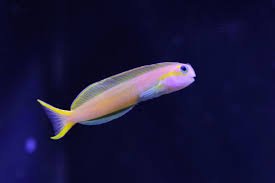The Significance of the Dragon in Traditional Chinese Healing Practices

In Chinese culture, the dragon is much more than a mythical creature. It is a symbol of power, wisdom, and auspiciousness. Its influence spans various aspects of life, from royal iconography to cultural beliefs. One of the areas where the dragon holds a profound and symbolic role is in Traditional Chinese Medicine (TCM) and healing practices. The integration of dragons in health and healing goes beyond the visual, reflecting deeper spiritual and energetic principles that align with TCM’s core philosophy of balance, harmony, and vitality.
Traditional Chinese Medicine, which has been practiced for thousands of years, is a comprehensive system of health that encompasses herbal medicine, acupuncture, dietary therapy, and qigong, among other practices. Central to TCM is the understanding of Qi (life force energy), which flows through the body, influencing physical, emotional, and spiritual health. The dragon, a powerful symbol of vitality and life energy, plays a significant role in these practices. This article explores the meaning of the dragon in the context of Chinese healing methods and how it is used to promote health and well-being in various aspects of TCM.
The Role of the Dragon in Chinese Cosmology and Healing
To understand the dragon’s significance in Chinese healing, it’s essential to first explore its symbolic connection to the broader cosmological and philosophical framework of Chinese culture. The dragon is often associated with the forces of nature, particularly water and the weather, elements that are central to TCM’s understanding of health. Dragons are seen as guardians of natural energy, and their presence signifies the flow of Qi, which is believed to be the source of life and health.
In Chinese cosmology, Qi is believed to circulate through the body, and its balance or imbalance directly affects health. The dragon is considered a symbol of powerful and unrestrained energy, much like the free flow of Qi. It is a creature of vitality, linking the heavens, earth, and the human body. According to TCM philosophy, health is achieved when Qi flows freely throughout the body, and illness occurs when the flow is obstructed or unbalanced. The dragon, therefore, represents the ideal state of Qi—free-flowing, strong, and in harmony with the natural world.
The Dragon’s Connection to the Five Elements
Traditional Chinese Medicine is built upon the concept of the Five Elements (Wood, Fire, Earth, Metal, and Water), which are seen as the fundamental forces of nature that govern the body and the environment. The dragon is closely associated with the Wood element in Chinese metaphysics. Wood, in turn, is linked to growth, vitality, and flexibility—qualities that reflect the dragon’s energetic, dynamic, and expansive nature.
The dragon’s connection to water, another of the Five Elements, is also significant in Chinese healing practices. Water is a vital source of life and is directly linked to the kidney system in TCM, which governs growth, reproduction, and energy. The dragon’s link to water can be seen in its role as a bringer of rain in Chinese mythology, symbolizing the ability to nourish and revitalize the body. Just as the dragon controls the rain and water flow, it is also believed to have the power to harmonize the body’s energy, ensuring that Qi circulates freely and naturally, much like the flow of rivers and streams.
The Dragon as a Healing Symbol in TCM Practices
The use of the dragon as a healing symbol in Chinese medicine extends to its incorporation in various forms of treatment, including acupuncture, herbal medicine, and even in the practice of Qigong.
Acupuncture and the Dragon’s Influence on Qi Flow
Acupuncture, a cornerstone of TCM, involves inserting fine needles into specific points along the body to regulate the flow of Qi and restore balance. The dragon is often invoked in acupuncture theory due to its symbolic connection with the dynamic and flowing energy that circulates through the body. One of the most powerful symbols in acupuncture is the dragon vein, which represents the primary pathways through which Qi flows. These pathways, called meridians, are believed to be the routes through which vital energy moves in the body.
The idea of the dragon vein directly correlates with the acupuncture system, as the dragon is seen as the protector of these energy channels. When the flow of Qi is obstructed or unbalanced, it can lead to illness or disease. Acupuncturists aim to unblock or regulate these pathways, much like a dragon moving through water, to restore balance and promote health. In this context, the dragon is more than just a cultural symbol—it embodies the healing force of nature and the vital energy that practitioners seek to activate and harmonize in the body.
Herbal Medicine: The Dragon and Vital Energy
Herbal medicine is another key component of Traditional Chinese Medicine, and the dragon’s influence is evident in the selection and use of certain herbs and tonics. Many herbal formulas are designed to invigorate the body’s Qi, promote blood circulation, and enhance vitality. Herbs such as Ginseng, Dong Quai, and Schisandra are often used to nourish Qi, restore energy, and promote longevity. These herbs, much like the dragon, are believed to help the body tap into its own internal vitality, assisting in the restoration of balance and overall health.
In TCM, the use of herbs is not just for physical healing but also for emotional and spiritual wellness. Just as the dragon is a bridge between the earthly and heavenly realms, the herbs in TCM serve to connect the body, mind, and spirit, promoting harmony and well-being at all levels. The dragon, symbolizing strength and vitality, is an emblem of the healing potential inherent in nature itself.
Qigong: Cultivating Dragon-like Energy
Qigong, a practice that combines breath control, meditation, and movement, is another integral part of Traditional Chinese Medicine. The aim of Qigong is to cultivate and balance Qi in the body, increasing energy, vitality, and mental clarity. In Qigong, the movement of the body is often compared to the flowing energy of a dragon, coiling and uncoiling to release blockages and restore the natural flow of life force.
In Qigong practices, practitioners often visualize the dragon’s energy as a guide to enhance their own vitality and healing. The dragon’s symbolic connection to the flow of Qi is deeply ingrained in Qigong techniques, where movements mimic the fluid, dynamic, and graceful nature of the dragon. These exercises help to strengthen the body, calm the mind, and align the spirit with the universal forces of nature.
The Dragon and Spiritual Healing
Beyond its role in physical healing, the dragon also holds a significant place in the spiritual healing practices of TCM. Chinese medicine views health not only in physical terms but also in emotional, mental, and spiritual dimensions. The dragon, with its celestial associations, is seen as a spiritual guide that helps to balance these aspects of the self.
Spiritual healing practices in TCM often involve meditative techniques that focus on aligning one’s internal energy with the cosmos. The dragon, a symbol of the flow of life and universal harmony, represents the potential for personal transformation and spiritual awakening. By invoking the dragon’s energy, individuals seek to heal on a deeper, more spiritual level, transcending physical ailments and achieving a state of harmony with the universe.
The Dragon and Longevity in Traditional Chinese Medicine
The concept of longevity is a key principle in TCM, and the dragon is often associated with this ideal. The dragon’s mythical role as an immortal being reflects its connection to longevity and vitality. In traditional Chinese beliefs, the dragon is seen as a protector of health and longevity, offering wisdom and guidance on how to maintain a long and prosperous life.
In TCM, practices that promote longevity, such as dietary therapy, exercise, and meditation, are often centered around the dragon’s attributes of vitality and energy. Foods that nourish Qi, such as goji berries, red dates, and Chinese yam, are believed to have a dragon-like power to invigorate the body and extend life. The dragon, in this context, is not just a symbol of physical health but also of the deeper wisdom needed to maintain harmony and balance in one’s life.
Conclusion: The Dragon as a Symbol of Health and Healing
The dragon in Traditional Chinese Medicine represents much more than a mythical creature. It is a symbol of the dynamic, vital energy that flows through the body and the natural world. From acupuncture to herbal medicine and Qigong, the dragon’s influence is deeply embedded in TCM practices that seek to balance the body’s Qi and restore harmony to the mind, body, and spirit.
As a protector of natural forces and a symbol of vitality, the dragon continues to inspire healing practices that promote not just physical health, but spiritual and emotional well-being as well. Whether through its connection to water and growth or its role as a guide to longevity, the dragon remains a powerful and enduring symbol of health and vitality in Chinese culture and healing traditions. By understanding the dragon’s significance in TCM, we can gain a deeper appreciation for the interconnectedness of nature, energy, and the human body, and the role of balance in maintaining good health.


